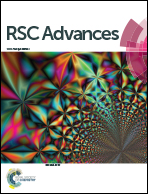In situ and ex situ NO oxidation assisted by sub-microsecond pulsed multi-pin-to-plane corona discharge: the effect of pin density
Abstract
The in situ (direct) and ex situ (indirect) nitric oxide (NO) oxidation experiments were carried out at room temperature in an atmospheric pressure multi-pin-to-plane corona discharge reactor. For in situ oxidation the gas mixture (NO–O2–H2O–N2) was directly treated in the plasma discharge, whereas for the ex situ oxidation the plasma reactor was used to generate ozone and other species using the O2–N2 gas mixture and at the outlet of the reactor the NO–N2 mixture is added. In this study, we have mainly investigated the influence of (i) reactor configuration on discharge morphology and ozone production, (ii) the NO removal efficiency of in situ and ex situ processes, (iii) input pulse energy deposition on NO oxidation and (iv) the influence of humidity on NO oxidation and NO2 selectivity. It is demonstrated that the increase of pin density (17 and 57 pins) increased the pulse energy (at a given applied voltage), and significantly decreased streamer branching and the corresponding volume occupied by the plasma channels. Therefore, NO conversion decreased. For in situ NO oxidation, at a fixed energy density, the 17 pin reactor was more efficient than the 57 pin reactor. A total NO conversion is obtained by ex situ plasma oxidation, whereas only 42% NO conversion is reached for in situ corona discharge using the 17 pin reactor at 42.5 mJ per pulse. However, in the ex situ plasma oxidation process when the ozone concentration exceeds about 90% of the NO inlet concentration, the NO2 selectivity dramatically decreases due to the secondary oxidation reaction of NO2 into NO3 and further conversion into N2O5. It is observed that the addition of 5% humidity does not influence the pulse energy deposition, whereas it has improved the NO conversion by 30% and decreased the NO2 selectivity by increasing HNO3 and HNO2 production.


 Please wait while we load your content...
Please wait while we load your content...